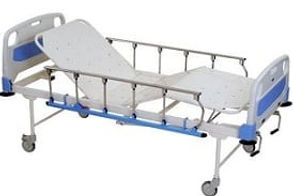Introduction:
Hospital beds are no longer confined to medical institutions alone. With advancements in technology and healthcare, hospital beds for home use have become a practical solution for individuals who require extended medical care, rehabilitation, or enhanced comfort due to chronic illnesses or temporary medical conditions. In this article, we explore the benefits and considerations of using hospital beds in the comfort of one's home, promoting better care, convenience, and quality of life.
Benefits of Hospital Beds for Home Use:
Improved Comfort and Convenience: Hospital beds designed for home use offer enhanced comfort and convenience compared to traditional beds. They often feature adjustable positions, allowing individuals to find the most comfortable sleeping or resting position. These beds enable easy elevation of the head, legs, or both, aiding in pain management, reducing pressure points, and providing optimal positioning for activities such as reading, eating, or watching television.

Enhanced Safety and Accessibility: Hospital beds for home use prioritize safety and accessibility. They typically come equipped with side rails that can be easily raised or lowered to prevent falls and promote a secure sleeping environment. Additionally, these beds have adjustable height settings, facilitating easy transfers in and out of bed, particularly for individuals with limited mobility or caregivers providing assistance.
Medical Care and Rehabilitation: Home-use hospital beds are suitable for individuals requiring ongoing medical care or rehabilitation. They provide a supportive and comfortable surface for individuals recovering from surgeries, managing chronic conditions, or undergoing physical therapy. Features such as adjustable positions, specialized mattress options, and built-in pressure relief systems can contribute to better healing, pain management, and improved overall well-being.
Assistance for Caregivers: Hospital beds designed for home use not only benefit the individual but also provide significant assistance to caregivers. These beds offer ergonomic features, such as adjustable heights, making it easier for caregivers to provide assistance with transfers, daily care routines, and monitoring the individual's health. Some models even incorporate advanced features like remote control operation, trendelenburg positions, and built-in scales, simplifying caregiving tasks and reducing strain on caregivers.
Considerations for Choosing a Hospital Bed for Home Use:
Functionality and Features: Assess your specific needs and consider the desired features when choosing a hospital bed for home use. Look for adjustable positions, height settings, side rails, and mattress options that align with the individual's comfort, medical requirements, and care routine.
Size and Space: Consider the available space in your home when selecting a hospital bed. Measure the room to ensure that the bed can fit comfortably without hindering mobility or obstructing other furniture. Opt for a bed size that accommodates the individual's needs while fitting within the available space.
Accessibility and Power Supply: Determine if your home has the necessary power outlets and accessibility for the hospital bed. Some models require electrical power for adjusting positions and operating additional features. Ensure that the bed can be positioned near a power source and that electrical cords are safely managed.
Quality and Durability: Invest in a hospital bed from a reputable manufacturer or supplier to ensure its quality, durability, and safety. Consider factors such as weight capacity, ease of maintenance, and warranties offered by the manufacturer.
Support and Service: Research the provider's reputation for customer support and after-sales service. Check reviews, inquire about their responsiveness to inquiries, and ensure they provide technical support, maintenance services, and spare parts if needed.
Conclusion:
Hospital beds for home use offer numerous advantages, including enhanced comfort, safety, and accessibility for individuals requiring extended medical care, rehabilitation, or improved quality of life. Consider the functionality, size, accessibility, and quality when selecting a hospital bed for home use. By choosing the right bed and working closely with healthcare professionals, caregivers, and reputable suppliers, individuals can enjoy the benefits of a hospital-grade sleeping surface in the comfort of their own homes, promoting better care, convenience, and overall well-being.





Comments